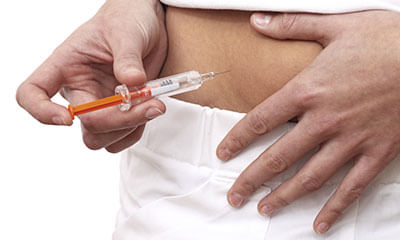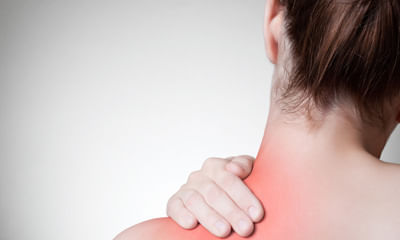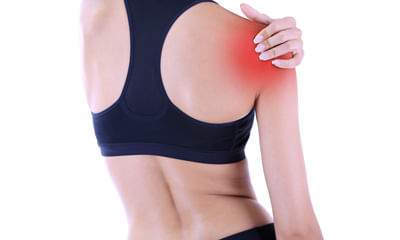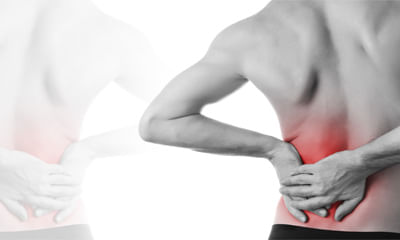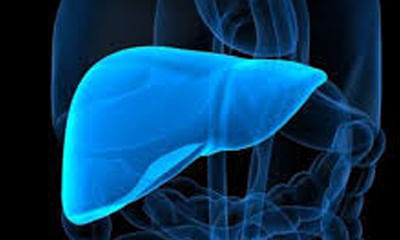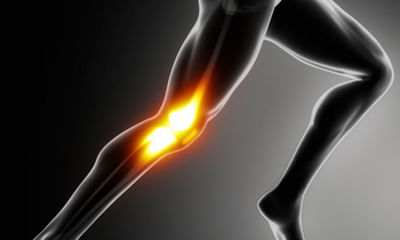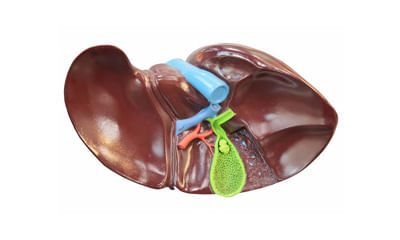Liver Protection Tablets
Doc I was sleep and I get up feel numbness around kidney or liver idk I feel like my blood is not going in there because ...
Ask Free Question
Don't worry it is just like numbness in hand and feet on long banding of hands or squating position.
Is there any side effects of drinking green tea over liver & kidney or any other body organ?(3-4 cup in a day ). ...
Ask Free Question
Hi lybrate-user, green tea is possibly unsafe when taken by mouth long-term or in high-doses. It can cause side effects because of the caffeine. These side effects can range from mild to serious and include headache, nervousness, sleep problems, vomiting, diarrhea, irritability, irregular heartbeat, tremor, heartburn, dizziness, ringing in the ears, convulsions, and confusion. Green tea seems to reduce the absorption of iron from food. Drinking very high doses of green tea is likely unsafe and can actually be fatal. The fatal dose of caffeine in green tea is estimated to be 10-14 grams (150-200 mg per kilogram). Serious toxicity can occur at lower doses.
Had sex on 10th june, got my periods on 11, sex was protected although at the end after he ejaculated he opened the cond ...
Ask Free Question
Regarding the ultrasound report you mentioned, it appears to contain findings related to various organs and structures in your abdomen. These findings, such as hepatomegaly (enlarged liver) with grade I fatty changes, microlith/echogenic calyx in the left kidney, mildly heterogeneous myometrium echotexture, and raised stromal echogenicity in the ovaries, indicate certain abnormalities or changes in those organs. The report suggests that these findings should be correlated with a hormonal profile, which means additional tests might be needed to better understand their significance and any potential underlying conditions. It's important to discuss these findings and their implications with a healthcare professional who can provide you with a proper diagnosis and appropriate guidance. They will be able to interpret the ultrasound report in the context of your specific situation and advise you on any necessary further investigations or treatments.
I am 46 years old lady, today I have test of lft in which sgot 31 iu/l sgpt 59 iu/l total bilirubin 0.57 mg/dl conjugate ...
Ask Free Question
We need to know your weight and status of diabetes or any medication you are taking. You can continue these medication. How ever pls follow the diet. You can check for diet in liver disease on youtube by me.
My hand and legs are blossom and nerves are very tight after blossom I can not hold any things. When I move my fingers v ...
Ask Free Question
The "normal" range (or negative test result) for rheumatoid factor is less than 14 iu/ml. Any result with values 14 iu/ml or above is considered abnormally high, elevated, or positive. Treatmentthere is no cure for rheumatoid arthritis. But clinical studies indicate that remission of symptoms is more likely when treatment begins early with medications known as disease-modifying antirheumatic drugs (dmards). Medicationsthe types of medications recommended by your doctor will depend on the severity of your symptoms and how long you've had rheumatoid arthritis. •nsaids. Nonsteroidal anti-inflammatory drugs (nsaids) can relieve pain and reduce inflammation. Over-the-counter nsaids include ibuprofen (advil, motrin ib) and naproxen sodium (aleve). Stronger nsaids are available by prescription. Side effects may include stomach irritation, heart problems and kidney damage. •steroids. Corticosteroid medications, such as prednisone, reduce inflammation and pain and slow joint damage. Side effects may include thinning of bones, weight gain and diabetes. Doctors often prescribe a corticosteroid to relieve acute symptoms, with the goal of gradually tapering off the medication. •disease-modifying antirheumatic drugs (dmards). These drugs can slow the progression of rheumatoid arthritis and save the joints and other tissues from permanent damage. Common dmards include methotrexate (trexall, otrexup, others), leflunomide (arava), hydroxychloroquine (plaquenil) and sulfasalazine (azulfidine). Side effects vary but may include liver damage, bone marrow suppression and severe lung infections. •biologic agents. Also known as biologic response modifiers, this newer class of dmards includes abatacept (orencia), adalimumab (humira), anakinra (kineret), baricitinib (olumiant), certolizumab (cimzia), etanercept (enbrel), golimumab (simponi), infliximab (remicade), rituximab (rituxan), sarilumab (kevzara), tocilizumab (actemra) and tofacitinib (xeljanz). These drugs can target parts of the immune system that trigger inflammation that causes joint and tissue damage. These types of drugs also increase the risk of infections. In people with rheumatoid arthritis, higher doses of tofacitinib can increase the risk of blood clots in the lungs. Biologic dmards are usually most effective when paired with a nonbiologic dmard, such as methotrexate. Therapy your doctor may send you to a physical or occupational therapist who can teach you exercises to help keep your joints flexible. The therapist may also suggest new ways to do daily tasks, which will be easier on your joints. For example, you may want to pick up an object using your forearms. Assistive devices can make it easier to avoid stressing your painful joints. For instance, a kitchen knife equipped with a hand grip helps protect your finger and wrist joints. Certain tools, such as buttonhooks, can make it easier to get dressed. Catalogs and medical supply stores are good places to look for ideas. Active treatments for rheumatoid arthritis •flexibility and strengthening exercises improve your range of motion and help you build muscle strength. Yoga and pilates are flexibility and strengthening exercises. •low-impact aerobic exercise is gentle but effective at helping you manage rheumatoid arthritis symptoms. Light walking is an example of this type of exercise. Your physical therapist will let you know how often to do these exercises. For example, you may need to do a few specific exercises 3 times a day, or your physical therapist may recommend a routine that incorporates 30 minutes of low-impact aerobic exercise a day and 30 minutes of strengthening exercises every other day.If your pain is more in the proximal joints, ie.in the upper limbs if the pain is present in the fingers/wrist and in the lower limbs it the pain is present in the toes/ ankle, then we shall definitely say it is rheumatic arthritis. Wear elbow brace and wrist brace which will make her to feel warm and that will make the joints become firm. Hot water fermentation will helpknee cap will also help to prevent the damaged cartilagesif your pain is more in the distal joints, ie. In the upper limbs if the pain is present in the fingers/wrist and in the lower limbs it the pain is present in the toes/ ankle, then we shall definitely say it is rheumatic arthritis. If your proximal joints (ie. Shoulder, hip & knee has pain) then you can pour hot (warm) water in that area to reduce the inflammation. If you have pain in the distal joints ie. Wrist, fingers, ankle, toes then you can wear either elbow brace or wrist brace which will help you to feel warm and very protective. An also immerse the distal joints in the hot water tub which will help you to reduce the pain. Knee pain during driving or watching movie. It might due to lack of movements in the knee while the joints are immobilized during driving and while watching movies. It is important that you need to have movements in and around the knee so that the blood flow will not be disturbed.
My mother (49) is suffering from joint pain since dec 2022 occurring randomly, sometimes at feet, fingers, or shoulders. ...
Ask Free Question
Rheumatoid arthritis the "normal" range (or negative test result) for rheumatoid factor is less than 14 iu/ml. Any result with values 14 iu/ml or above is considered abnormally high, elevated, or positive. Treatmentthere is no cure for rheumatoid arthritis. But clinical studies indicate that remission of symptoms is more likely when treatment begins early with medications known as disease-modifying antirheumatic drugs (dmards). Medicationsthe types of medications recommended by your doctor will depend on the severity of your symptoms and how long you've had rheumatoid arthritis. •nsaids. Nonsteroidal anti-inflammatory drugs (nsaids) can relieve pain and reduce inflammation. Over-the-counter nsaids include ibuprofen (advil, motrin ib) and naproxen sodium (aleve). Stronger nsaids are available by prescription. Side effects may include stomach irritation, heart problems and kidney damage. •steroids. Corticosteroid medications, such as prednisone, reduce inflammation and pain and slow joint damage. Side effects may include thinning of bones, weight gain and diabetes. Doctors often prescribe a corticosteroid to relieve acute symptoms, with the goal of gradually tapering off the medication. •disease-modifying antirheumatic drugs (dmards). These drugs can slow the progression of rheumatoid arthritis and save the joints and other tissues from permanent damage. Common dmards include methotrexate (trexall, otrexup, others), leflunomide (arava), hydroxychloroquine (plaquenil) and sulfasalazine (azulfidine). Side effects vary but may include liver damage, bone marrow suppression and severe lung infections. •biologic agents. Also known as biologic response modifiers, this newer class of dmards includes abatacept (orencia), adalimumab (humira), anakinra (kineret), baricitinib (olumiant), certolizumab (cimzia), etanercept (enbrel), golimumab (simponi), infliximab (remicade), rituximab (rituxan), sarilumab (kevzara), tocilizumab (actemra) and tofacitinib (xeljanz). These drugs can target parts of the immune system that trigger inflammation that causes joint and tissue damage. These types of drugs also increase the risk of infections. In people with rheumatoid arthritis, higher doses of tofacitinib can increase the risk of blood clots in the lungs. Biologic dmards are usually most effective when paired with a nonbiologic dmard, such as methotrexate. Therapy your doctor may send you to a physical or occupational therapist who can teach you exercises to help keep your joints flexible. The therapist may also suggest new ways to do daily tasks, which will be easier on your joints. For example, you may want to pick up an object using your forearms. Assistive devices can make it easier to avoid stressing your painful joints. For instance, a kitchen knife equipped with a hand grip helps protect your finger and wrist joints. Certain tools, such as buttonhooks, can make it easier to get dressed. Catalogs and medical supply stores are good places to look for ideas. Surgeryif medications fail to prevent or slow joint damage, you and your doctor may consider surgery to repair damaged joints. Surgery may help restore your ability to use your joint. It can also reduce pain and improve function. Rheumatoid arthritis surgery may involve one or more of the following procedures: •synovectomy. Surgery to remove the inflamed lining of the joint (synovium) can be performed on knees, elbows, wrists, fingers and hips. •tendon repair. Inflammation and joint damage may cause tendons around your joint to loosen or rupture. Your surgeon may be able to repair the tendons around your joint. •joint fusion. Surgically fusing a joint may be recommended to stabilize or realign a joint and for pain relief when a joint replacement isn't an option. •total joint replacement. During joint replacement surgery, your surgeon removes the damaged parts of your joint and inserts a prosthesis made of metal and plastic. Surgery carries a risk of bleeding, infection and pain. Discuss the benefits and risks with your doctor.
My in law had legs paining problem but recently her legs were became red don't no what kind of problem she had could you ...
Ask Free Question
It may be due to venous insufficiency kindly do certain exercises that may help you to get rid of your pain. Strengthening exercises 5. Half squat to do this exercise: 1. Get into a standing squat position with your feet shoulder-width apart. Place your hands on your hips or out in front of you for balance. 2. Looking straight ahead, slowly squat down about 10 inches. This is the halfway point to a full squat. 3. Pause for a few seconds, then stand up by pushing through your heels. 4. Do 2 to 3 sets of 10 repetitions. 5. Calf raises to do this exercise: 1. Stand with your feet shoulder-width apart. Position yourself next to a wall or hold on to the back of a chair for support. 2. Lift both your heels off the ground so that you’re standing on the balls of your feet. 3. Slowly lower your heels to the starting position. Control is important with this exercise for strengthening your calf muscles. 4. Do 2 to 3 sets of 10 repetitions. 6. Hamstring curl 7. Leg extensions to do this exercise: 1. Sit up tall in a chair. 2. Put your feet flat on the floor, hip-width apart. 3. Look straight ahead, contract your thigh muscles, and extend one leg as high as possible without raising your buttocks off the chair. 4. Pause, then lower to the starting position. 5. Do 2 to 3 sets of 10 repetitions for each leg. 8. Straight leg raises to do this exercise: 1. For this exercise, you can use a mat to add cushioning under your back. 2. Lie down on the floor with one leg bent and one leg straight out in front of you. 3. Contract the quadricep of your straight leg and slowly raise it up off the floor until it’s the same height as your bent knee. 4. Pause at the top for 5 seconds, then lower to the starting position 5. Do 2 to 3 sets of 10 repetitions for each leg. 9. Side leg raises to do this exercise: 1. Lie on your side with your legs stacked on top of each other. Cradle your head in your hand, and place your other hand on the floor in front of you. 2. Raise your top leg as high as you comfortably can. You should feel this on the side of your hips. 3. Pause briefly at the top, then lower your leg. 4. Do 2 to 3 sets of 10 repetitions for each leg. 10. Prone leg raises to do this exercise: 1. For this exercise, you can use a mat to add cushioning beneath you. 2. Lie on your stomach with your legs straight out behind you. You can let your head rest on your arms. 3. Engage your glute and hamstring muscles in your left leg and lift your leg as high as you exercise. 4. Hold your leg in the lifted position for 5 seconds. 5. Lower your leg, rest for 2 seconds, then repeat. 6. Do 2 to 3 sets of 10 repetitions for each leg. Lifestyle and home remedies rest. Take a break from your normal activities to reduce repetitive strain on your knee, give the injury time to heal and help prevent further damage. A day or two of rest may be all you need for a minor injury. More severe damage is likely to need a longer recovery time. Ice. Ice reduces both pain and inflammation. A bag of frozen peas works well because it covers your whole knee. You also can use an ice pack wrapped in a thin towel to protect your skin. Although ice therapy is generally safe and effective, don't use ice for longer than 20 minutes at a time because of the risk of damage to your nerves and skin. Heat. You may experience temporary pain relief by applying a heat pack or hot-water bottle to the painful area on your knee. Compression. This helps prevent fluid buildup in damaged tissues and maintains knee alignment and stability. Look for a compression bandage that's lightweight, breathable and self-adhesive. It should be tight enough to support your knee without interfering with cot oirculation. Elevation. To help reduce swelling, try propping your injured leg on pillows or sitting in a recliner. Home remedies and prevention: •drinking plenty of water. Over-the-counter nsaids (nonsteroidal anti-inflammatory drugs), such as ibuprofen (advil, motrin). •home remedies may be very beneficial for the management of chronic gout, as well. The dietary modifications detailed above can be very effective in certain patients. Drinking plenty of water to remain well-hydrated can be beneficial in preventing gout attacks. •limit or avoid alcohol. Talk with your doctor about whether any amount or type of alcohol is safe for you. Recent evidence suggests that beer may be particularly likely to increase the risk of gout symptoms, especially in men. •get your protein from low-fat dairy products. Low-fat dairy products may actually have a protective effect against gout, so these are your best-bet protein sources. •limit your intake of meat, fish and poultry. A small amount may be tolerable, but pay close attention to what types — and how much — seem to cause problems for you. •maintain a desirable body weight. Choose portions that allow you to maintain a healthy weight. Losing weight may decrease uric acid levels in your body. But avoid fasting or rapid weight loss, since doing so may temporarily raise uric acid levels. Food to eat: •fresh fruits and vegetables such as berries, oranges, bell pepper and pineapple. •low-fat dairy products, such as yogurt and skimmed milk. •nuts including nut butter ••s such as almond butter and peanut butter. •whole grains. •potatoes, rice, whole-grain bread and pasta. •eggs (in moderation). •oils such as olive oil.•flax and other seeds. •plenty of water and other non-sugary and non-alcoholic drinks. •vitamin c. Supplements containing vitamin c may reduce the levels of uric acid in your blood. •cherries have been lower levels of uric acid, as well as reduce the number of gout attacks. •decaffeinated coffee and caffein will lower uric acid levels. Foods to be avoided: •alcohol is a major trigger for gout attacks. Beer is especially bad for gout since it is rich in purines. •certain fish, seafood and shellfish, including anchovies, trout, sardines, herring, codfish, mussels, codfish, scallops and haddock. •organ meats such as liver, kidney, sweetbreads and brain. People with gout, however, can have a moderate intake of lean meats such as chicken and turkey. •red meat including bacon, turkey, veal and venison.•dried beans and peas. Food products containing a high amount of fructose such as soda and some juices, cereal, ice cream, candy and junk food.
How long can you drink hibiscus tea if you have a fatty liver? Will you cause more harm if drinking more that two to thr ...
Ask Free Question
Hibiscus tea is a herbal tea made from the dried petals of the hibiscus plant. It is rich in antioxidants and has been found to have several health benefits, including reducing high blood pressure, improving cholesterol levels, and helping with weight loss. While there is limited research on the effects of hibiscus tea specifically on fatty liver disease, some studies suggest that it may have a protective effect on the liver. There is no specific recommendation for how long you can drink hibiscus tea if you have a fatty liver. However, in general, drinking hibiscus tea in moderation is considered safe for most people. Drinking more than two to three months is unlikely to cause harm if you do not have any adverse reactions to the tea. It is important to note that while hibiscus tea may have health benefits, it is not a substitute for medical treatment for fatty liver disease. If you have been diagnosed with fatty liver disease, it is important to work with a healthcare professional to develop an appropriate treatment plan that may include lifestyle changes, medication, and regular monitoring of liver function.
I have pain around the left knee joint first and around lateral side, now getting stiffness and locking, mri old one sho ...
Ask Free Question
Try to offload joint which is less of using stairs, sitting on chair, avoid sitting cross leg. Along with quadriceps strength exercises. Thanks.
That day I drink wine what kind of medicine will protect the liver if taken that day. And what tonic is more beneficial ...
Ask Free Question
Take fruits/ vegetables, rich in antioxidants, empty stomach, one glass juice in proportion of 80 & 20, 80 percent vegetbles & 20 percent fruits, make one glass juice, drink it, you'll fell good. & maintaian 1 hour gap after this before having breakfast.



